The British Pound (GBP) opened trading on Sunday night at 1.08. Within the first hour of trading, the GBP hit a low of 1.04. While a 4% decline may not seem like much to stock traders, FX volatility of that magnitude is extremely rare. The graph below shows Monday’s opening bashing. Statistically, such FX volatility (6.29 standard deviations) should occur once every 500 million trading days.
FX markets are seeing high levels of volatility in recent months as dollar appreciation is gaining momentum. The Fed intends to keep raising rates and doing QT to arrest inflation. However, their plans may be interrupted if they cannot calm FX volatility. While Congress mandates the Fed use policy for maximum employment and price stability, they have self-proclaimed that avoiding financial instability is their third mandate. FX volatility, the likes of which we are experiencing with increasing frequency, may get the Fed to rethink its hawkish plans.
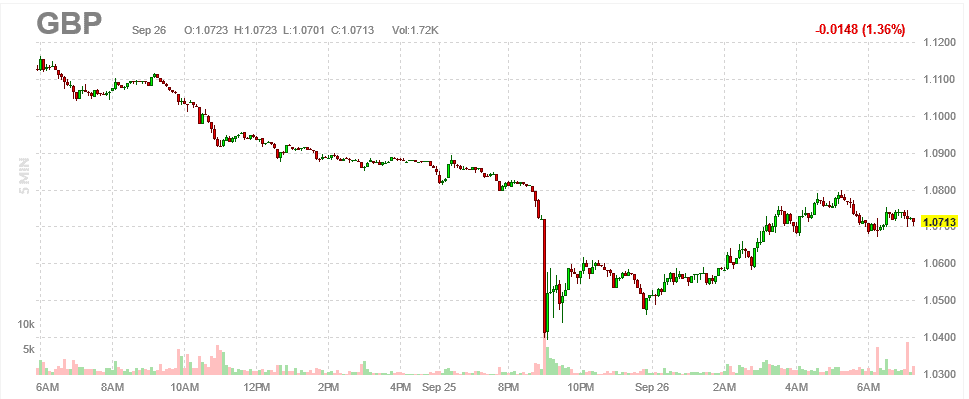

What To Watch Today
Economy
- 8:30 a.m. ET: Durable goods orders, August preliminary (-0.3% expected, -0.1% prior)
- 8:30 a.m. ET: Durables excluding transportation, August preliminary (0.2% expected, 0.2% prior)
- 8:30 a.m. ET: Non-defense capital goods orders excluding aircraft, August preliminary (0.2% expected, 0.3% prior)
- 8:30 a.m. ET: Non-defense capital goods shipments excluding aircraft, August prelim(0.3% expected, 0.5% prior)
- 9:00 a.m. ET: FHFA Housing Pricing Index, July (0.0% expected, 0.1% prior)
- 9:00 a.m. ET: Case-Shiller 20-City Composite, month-over-month, July (0.20% expected, 0.44% prior)
- 9:00 a.m. ET: S&P CoreLogic Case-Shiller 20-City Composite, year-over-year, July (17.10% expected, 18.65% prior)
- 9:00 a.m. ET: S&P CoreLogic Case-Shiller U.S. National Home Price Index (17.96% prior)
- 10:00 a.m. ET: Conference Board Consumer Confidence, September (104.5 expected, 103.2 prior)
- 10:00 a.m. ET: Conference Board Present Situation, September (145.4 prior)
- 10:00 a.m. ET: Conference Board Expectations, September (75.1 prior)
- 10:00 a.m. ET: Richmond Fed Manufacturing Index, September (-10 expected, -8 prior)
- 10:00 a.m. ET: New Home Sales, August (500,000 expected, 500,000 prior)
- 10:00 a.m. ET: New Home Sales, month-over-month, August (-2.2% expected, -12.6% prior)
Earnings

Market Trading Update
The market started out yesterday with a rally to the upside, but such was short-lived as the U.S. dollar exploded higher amidst global foreign exchange (FX) volatility. As discussed in yesterday’s 3-Minutes Video, the market is now standard deviations below the 50-dma, and, as noted below, every sector and market is oversold. Such conditions do not last long, and a fairly strong reflexive rally is likely. Use that rally to reduce equity risk and raise cash.
The long-dollar, short-bond trade is now extremely stretched. If you are looking for a place to invest capital, a bet on an unwind of that trade is a high probability outcome over the next 3 months or so.
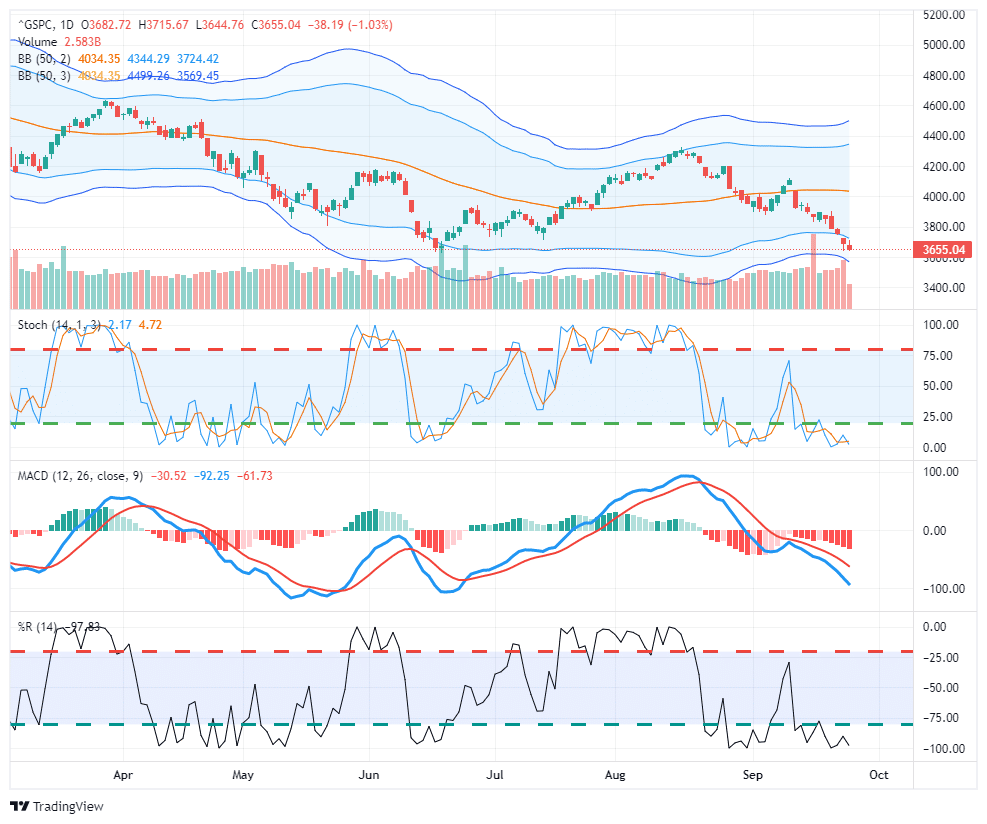
Technical Analysis Calls for a Bounce- Can we Trust it?
In this past weekend’s Newsletter, No Pivot on the Horizon, we shared the graph below. As it shows, all S&P 500 sectors are grossly oversold. The second graph is from our proprietary technical model. It uses 13 technical gauges to arrive at a technical score. Often a score near -.75 signals grossly oversold conditions. Currently, all but two sectors signal such a condition. In typical markets, we would consider a relief rally or oversold bounce is probable. However, remember that the most significant past declines have come from very oversold levels. Trade with caution; these markets are challenging.
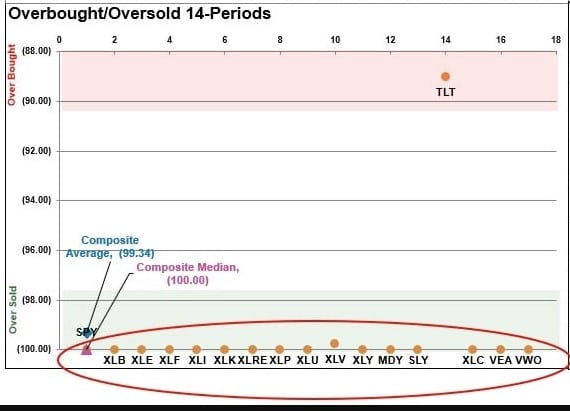
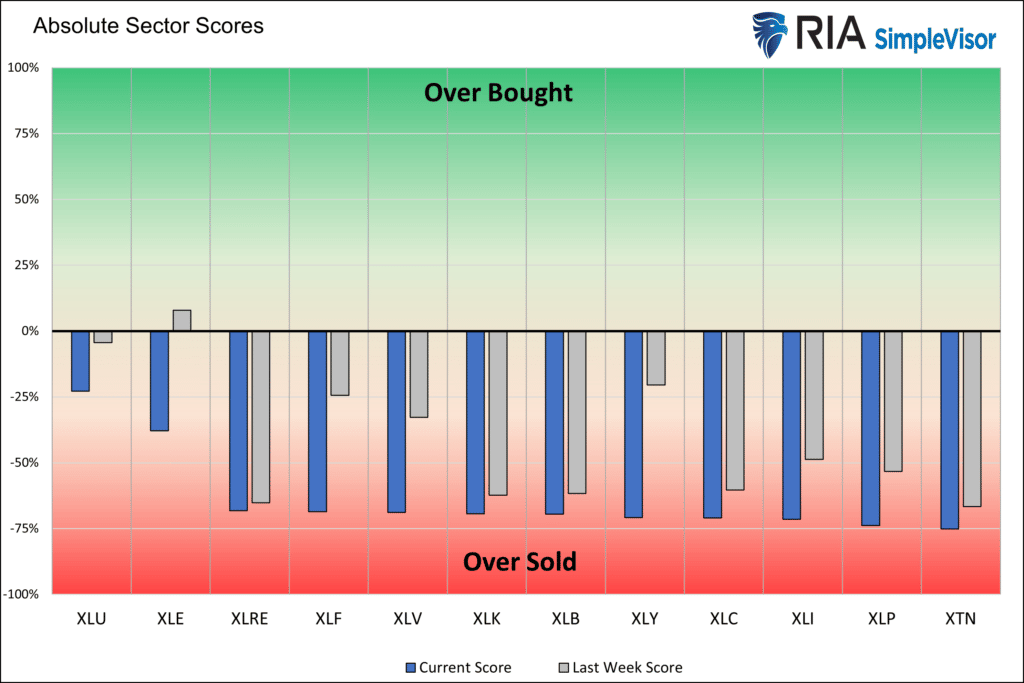
Most Bearish Market in 13 Years
The graph below from Sentimentrader shows that the AAII individual investor survey reports that 60% of its respondents are bearish. Such a high level is on par with the bear market bottoms of 2009 and the early 90s. Investors were not this bearish in 2020 or in June when markets were last at current levels. The commentary above the graph is courtesy of Callum Thomas.
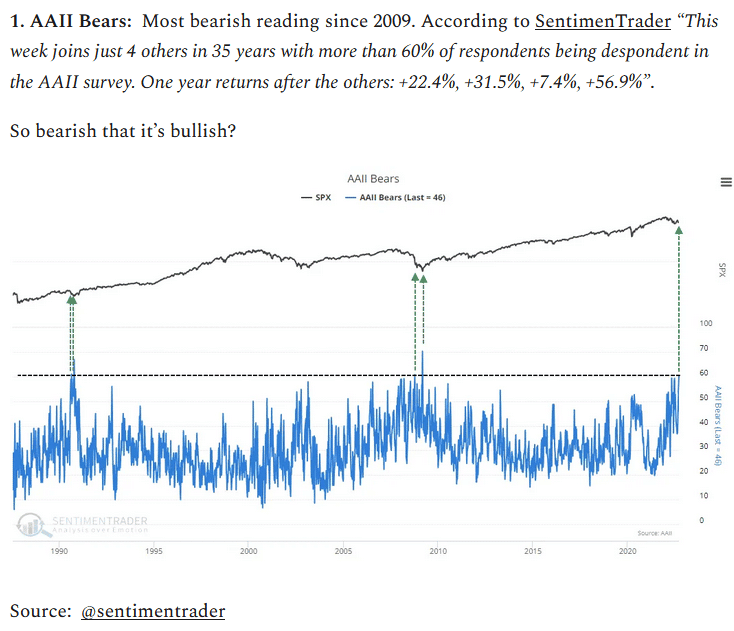
More than 33 million puts traded last Friday. That marks the highest single day of put volume since data was first collected about 30 years ago. The second graph shows the equity put-call ratio is also trading near extreme levels. The ratio measures the number of put options trading versus the number of call options. Lastly, the third graph measures the price premium investors are paying for puts versus calls. Like the information above, Friday’s trading activity marks extreme bearishness and possibly capitulation.
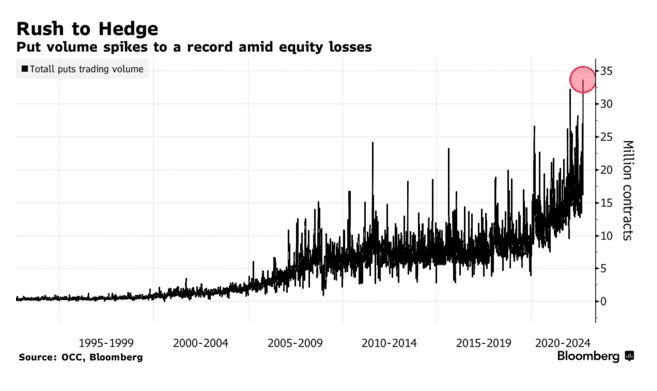
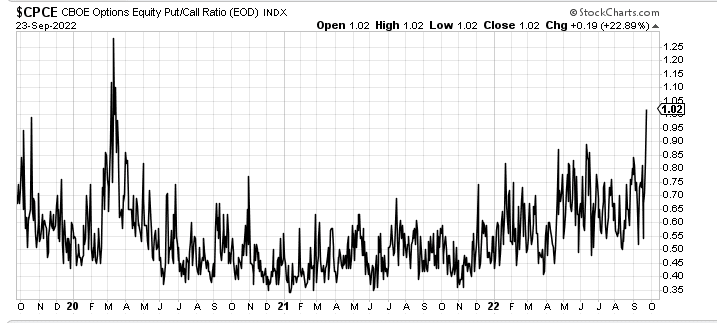
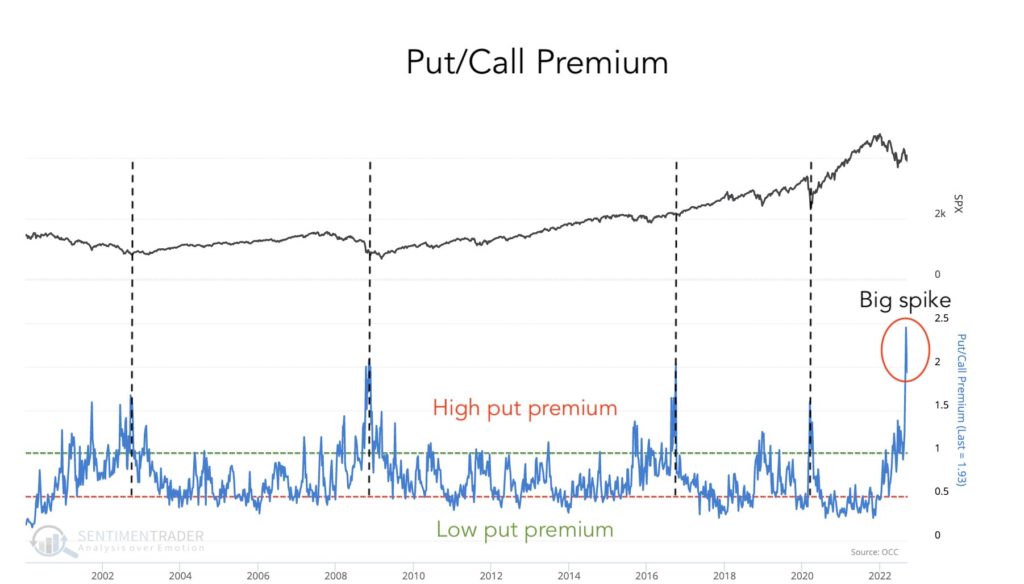
UK CDS Warns
CDS or credit default swaps are financial derivatives that allow participants to buy or sell insurance on the bankruptcy of a corporation or country. The swap is quoted in the annual percentage rate (bps) a buyer of insurance must pay annually. The graph below shows that a 5-year CDS contract on the UK spiked over the last month from 10bps to 35bps. While 35bps is very low, the surge in CDS, and recent FX volatility is worth paying attention to. The UK is not going bankrupt, but investors are showing worrying signs that financial instability is rising.
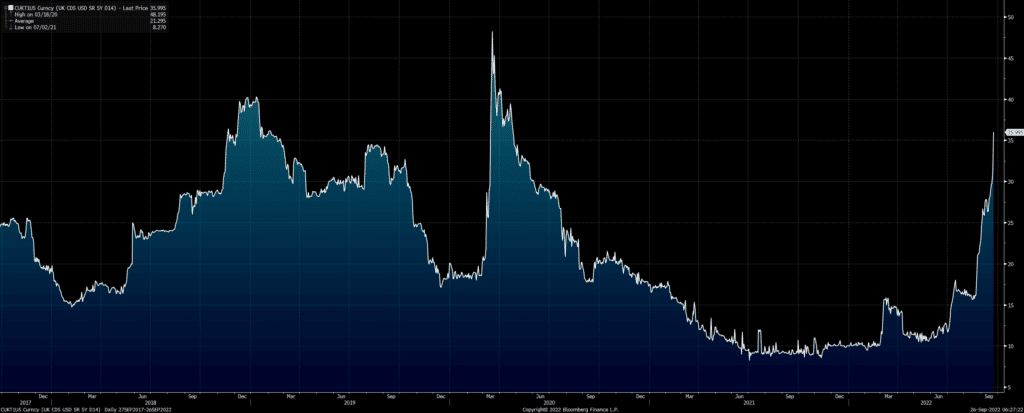
Tweet of the Day
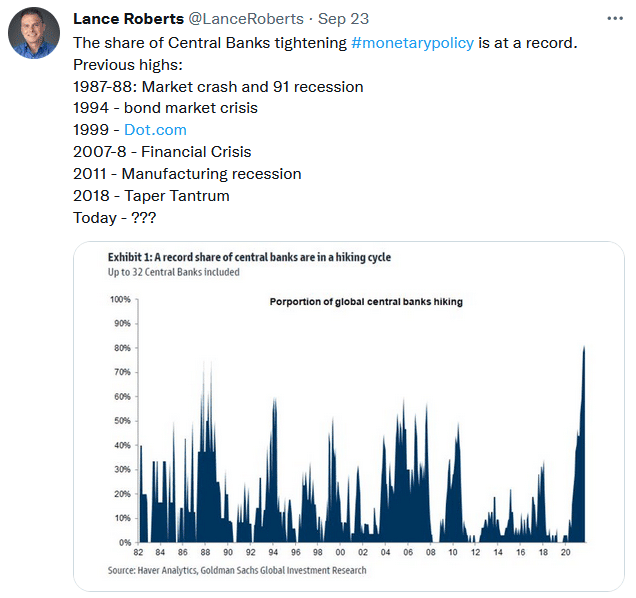
Please subscribe to the daily commentary to receive these updates every morning before the opening bell.
If you found this blog useful, please send it to someone else, share it on social media, or contact us to set up a meeting.




